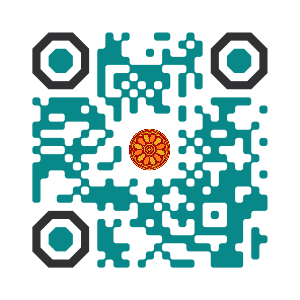
:: International Transaction Journal of Engineering, Management, & Applied Sciences & Technologies
http://TuEngr.com

ISSN 2228-9860
eISSN 1906-9642
CODEN: ITJEA8
FEATURE PEER-REVIEWED ARTICLES
Vol.10(12) (2019) |
➤ Free download full issue at Google Play / Google Book
-
READINESS FOR ORGANIZATIONAL CHANGE THROUGH DYNAMIC CAPABILITIES AND ROUTINIZATION: A STUDY OF THREE INDUSTRIAL ESTATES
 Abdul Salam Khuhro*, Asad Afzal Humayon, Muhammad Sajjad (COMSATS University Islamabad, Vehari Campus, PAKISTAN ),
Abdul Salam Khuhro*, Asad Afzal Humayon, Muhammad Sajjad (COMSATS University Islamabad, Vehari Campus, PAKISTAN ),
Rafique Ahmed Khuhro (University of Haripur, PAKISTAN ),
Muhammad Irfan (COMSATS University Islamabad, Vehari Campus, PAKISTAN )
doi: 10.14456/ITJEMAST.2019.150
Keywords: China Pakistan Economic Corridor (CPEC); Strategic Sense Making Capacity; Timely Decision Making Capacity; Change Implementation Capacity; Structural Equation Modeling; AMOS.
AbstractThis empirical study investigates the Pakistani firms' dynamic capabilities and routinization in relation with China Pakistan Economic Corridor (CPEC). Three industrial estates were selected to predict this unescapable change. These industrial estates are Hattar, and Gadoon Amazai from KPK province, and Taxila from Punjab province, Pakistan. The proposed model is based on five variables: three variables of dynamic capabilities, one of routinization and the fifth for the Readiness of Organizational Change. This model is analysed through structural equation modelling technique with AMOS. CFA is conducted to test the adopted scales relevance with the model. Model fit indicators designates the standard statistics. Ten hypotheses were developed to test the suggested model, out of which seven hypotheses were accepted based on level of significances. The study finds that the firms under observation are ready for organizational change due to CPEC with reference to strategic capacities and routinization for strategic level. Routinization of the strategic level has positively mediated between strategic sense making capacity and readiness of organizational change; same is with another change implementation capacity and readiness for organizational change. However, routinization of the strategic level failed to mediate the relationship between timely decision-making capacity and readiness for organizational change.
Paper ID: 10A12A -
WATER PERMEABILITY OF CONCRETE MIXING ASH AND CRUSHED DUST
 Phongphoom Sornchomkaew (Department of Civil Engineering Faculty of Engineering, Rajamangala University of Technology Rattanakosin, THAILAND ),
Phongphoom Sornchomkaew (Department of Civil Engineering Faculty of Engineering, Rajamangala University of Technology Rattanakosin, THAILAND ),
Kritsada Anantakarn* (Department of Civil Engineering Faculty of Engineering, Rajamangala University of Technology Tawan-ok, THAILAND ),
Thongchai Phothong (Department of Civil Engineering Faculty of Engineering, King Mongkut's University of Technology Thonburi, THAILAND )
doi: 10.14456/ITJEMAST.2019.151
Keywords: Palm-oil waste ash; Cement replacement; Natural pozzolan material; Concrete mix design; Pozzolan ash.
AbstractThe objectives of the research studied the use of pozzolan and crushed dust as admixtures in general concrete for permeability. The replacement of Portland cement with palm oil waste ash by 0, 10, 20, and 30 percent by weight respectively, and replacement sand with crushed dust at levels of 100, 90, 80, and 70 percent by weight were determined. After 28 days of curing, the results showed suitable quantities of replacing cement with pozzolan waste ash is 30 percent by weight, and 100 percent replacement sand with crushed dust can improve the physical and mechanical properties of concrete. Ash and crushed dust can decrease the permeability of concrete by 1.50-3.30 time. Concrete replacement sand with crushed dust 100, 90, 80, and 70 percent by weight can decrease the permeability of concrete by 20 percent. The rate of the permeability in concrete is reduced in proportion to the increase of pozzolan ash and crushed dust.
Paper ID: 10A12B -
A STUDY OF URBAN DESIGN ELEMENTS IN STRUCTURED VILLAGE AT GELUGOR, PENANG
 Lee Phei Qie*, Lai Chi Mun*, Ahmad Sanusi Hassan (School of Housing, Building & Planning, Universiti Sains Malaysia, MALAYSIA ),
Lee Phei Qie*, Lai Chi Mun*, Ahmad Sanusi Hassan (School of Housing, Building & Planning, Universiti Sains Malaysia, MALAYSIA ),
Asif Ali (School of Housing, Building & Planning, Universiti Sains Malaysia, MALAYSIA and Architecture Section, University Polytechnic of Aligarh Muslim University, INDIA ),
Boonsap Witchayangkoon (Department of Civil Engineering, Thammasat School of Engineering, Thammasat University, THAILAND )
doi: 10.14456/ITJEMAST.2019.152
Keywords: Town image; Gridiron layout; Mental mapping; Structured village; Urban circulation; Urbanization.
AbstractThis paper analyses the town image and the mental mapping of the structured village at Gelugor, Penang, on five urban design elements, which are the path, edge, district, node, and landmark. Observation, data collection and fieldwork survey are the methods applied in the study. The study finds that Taman Tun Sardon and structural village in Gelugor have a masterplan with gridiron design, which makes the site systematically arranged. The gridiron concept forms primary road networks and linkages with vehicular paths, which make the site well connected. The path becomes the most dominant element in this study. This study shows that structured village at Gelugor has an urban design with regular gridiron urban layout, which provides good circulation in the area. The gridiron pattern then becomes distortion at Taman Tun Sardon area due to the hilly topography of the site. The paths formed by the gridiron layout have enabled a clear definition of the district in the structured village at Gelugor. The path is the most dominant element in the study area. Besides, the study shows that there is a lack of quality nodes and landmarks available in the study area.
Paper ID: 10A12C -
AN ANALYSIS OF RESEARCH AREAS IN PRECISION AGRICULTURE
 A.S.Gusev*, G.A.Beznosov (Federal State Budgetary Educational Institution of Higher Education, Ural State Agrarian University, (FGBOU VO Uralsky GAU) Ekaterinburg, ul. Karl Liebknecht, 42, RUSSIAN FEDERATION ),
A.S.Gusev*, G.A.Beznosov (Federal State Budgetary Educational Institution of Higher Education, Ural State Agrarian University, (FGBOU VO Uralsky GAU) Ekaterinburg, ul. Karl Liebknecht, 42, RUSSIAN FEDERATION ),
N.V. Ziablitckaia (South Ural State University, Chelyabinsk, pr.Lenina, 76, RUSSIAN FEDERATION ),
M.V. Kholmanskikh, L.A. Novopashin, L.V. Denyozhko, A.A. Sadov (Federal State Budgetary Educational Institution of Higher Education, Ural State Agrarian University (FGBOU VO Uralsky GAU) Ekaterinburg, ul. Karl Liebknecht, 42, RUSSIAN FEDERATION )
doi: 10.14456/ITJEMAST.2019.154
Keywords: Agriculture technology; Precision livestock farming (PLF); Precision farming; Web of Science; Precision agriculture research.
AbstractThis article discusses the key research areas in precision farming and precision agriculture. The bibliographic method is used as a research tool. The average level of precision farming technologies in the USA is 30-50%, in the Russian Federation 10%. Despite the fact that precision agriculture technologies are aimed primarily at reducing costs by increasing the intensity of production and the level of resource output, the studies show that the resource intensity of agricultural production in Russia is still too high to speak about success in resource conservation. The 2014-2018 articles contents in the bibliographic database Web of Science are analyzed, totaling 4662 articles. In the most highly cited articles native English speakers (USA, UK, Australia) often use the term “precision farming”, while other countries scientists (China, India, EU, Iran, etc.) use the term “precision agriculture”. The considerable leaders in the total number of publications on the subject are countries with traditionally developed agriculture, such as the USA (20.0% of the number of articles reviewed), Brazil (8.8%), China (17.5%), and Spain (7.3%). The leader among scientific journals with publications on the problem is “Computers and electronics in agriculture”; it has 4.9% of all articles. The leading research organizations include the US Department of Agriculture (USDA), the Chinese academy of Sciences, Consejo Superior de Investigaciones Cientificas CSIC (Spain). The average level of introduction of precision farming technologies in the USA is estimated at 30-50%, while at large farms the level of technology use is twice the small ones. Its most common elements are: a computer with high-speed Internet access, an analysis of soil samples (98%); yield maps, yield monitors, GPS navigation systems (about 80%); differential fertilization technologies (60%); satellite images and a vegetative index analysis - (no more than 30%) of farmers. All the listed technologies should be developed intensively both in the world and in Russia, with the increased investments in precision agriculture research.
Paper ID: 10A12D -
AN INVESTIGATION ON STAKEHOLDERS' PERCEPTION REGARDING EFFECTIVENESS OF SOCIAL MEDIA IN PAKISTAN'S HIGHER EDUCATION
 Muhammad Junaid Siraji*, Liaquat Hussain (Institute of Education & Research, Gomal University, Dera Ismail Khan, KP, PAKISTAN )
Muhammad Junaid Siraji*, Liaquat Hussain (Institute of Education & Research, Gomal University, Dera Ismail Khan, KP, PAKISTAN )
doi: 10.14456/ITJEMAST.2019.155
Keywords: Social media effectiveness; Higher educational institutions; Parents' perception; Students' perception; Teachers' perception.
AbstractIn the contemporary era, social media is considered as a vital tool for providing opportunities to different groups of stakeholders to get them informed about shared interests. It helps stakeholders in sharing views, organizing demands and managing their interventions. The effectiveness of social media has become vital phenomenon which needs further exploration in different context including higher education. The stakeholders' perception (students, parents & teachers) about social media effectiveness has developed the leading and burning issue in the context of higher education. These concepts have been extracted from the existing research studies which were transformed into theoretical framework wherein hypotheses were developed. The perceptions of the said stakeholders were analyzed by collecting primary data from students, parents, and teachers hailing from the higher educational institutions of Khyber Pakhtunkhwa. The results of study provide significant information in deciding relationships between research concepts.
Paper ID: 10A12E -
INFLUENCES OF THE IODINE-POLYMER PREPARATION "MONCLAVIT-1" ON THE HORMONAL, MORPHOLOGICAL AND BIOCHEMICAL STATUS OF THE BLOOD OF LAMBS OF WEST SIBERIAN MEAT BREED
 Afanasyeva Antonina Ivanovna* (Faculty of Biology and Technology, Altai State Agrarian University, RUSSIA )
Afanasyeva Antonina Ivanovna* (Faculty of Biology and Technology, Altai State Agrarian University, RUSSIA )
Sarychev Vladislav Andreevich (Department of General Biology, Physiology, and Morphology of Animals, Altai State Agrarian University, RUSSIA )
Katamanov Sergey Grigorievich (Administration of the Rodinsky District of the Altai Territory, RUSSIA )
Loretts Olga Gennadievna, and Neverova Olga Petrovna (Ural State Agrarian University RUSSIA )
doi: 10.14456/ITJEMAST.2019.156
Keywords: Protein; carbohydrate; lipid metabolism of lambs; blood morphological parameters; Iodine deficiency; thyroid hormones.
AbstractTo increase the economic efficiency of sheep farming and produce high-quality mutton, in 2011 in the Altai Territory a West Siberian meat breed of sheep was created (patent No. 5728, 11.01.2011), characterized by endurance, precocity, high reproductive qualities, and fertility (160 %). Sheep are distinguished by a long, thick, white-colored grease coat and noble crimpiness with wool fineness 21-24 microns. The yield of washed wool is 57-58%, with wool length 9cm in uterus to 11.5cm in rams. The slaughter yield reaches more than 50%. Biogeochemical features of their breeding area are the limiting factor in the breed improvement process. In particular, the Altai Territory is deficient in iodine. Iodine deficiency leads to a decrease in the functional activity of the thyroid gland, metabolic disorders, changes in the morpho-biochemical composition of the blood and reduced productivity. In connection with this, a scheme of application has been studied to study the effect of the iodine-polymer preparation Monklavit-1 on the hormonal, morphological and biochemical status of the blood of lambs of the West Siberian meat breed. It was established that the drug contributes to the preservation of the physiological status of lambs by increasing the level of thyroid hormones (T3 and T4) by 13.1 and 12.3 (P <0.01)%, respectively, as a result of which the protein-synthetic function of the liver is activated, increases the concentration of proteins in the blood of plastic values - albumin by 6.9%, energy metabolism normalizes, which affected the increase in glucose level by 15.7% (P <0.01) and decrease in cholesterol concentration by 25.0%; groups; the number of erythrocytes and hemoglobin increased by 8.1 and 9.7 (P <0.01), respectively, leukogram stabilized.
Paper ID: 10A12F -
LAND-USE/LAND COVER CLASSIFICATION ANALYSIS USING PIXEL BASED METHODS: CASE OF TAROM CITY, IRAN
 Seyyed Behrouz Hosseini, Ali Saremi * (Department of Water Science and Engineering, Science and Research Branch, Islamic Azad University, Tehran, IRAN )
Seyyed Behrouz Hosseini, Ali Saremi * (Department of Water Science and Engineering, Science and Research Branch, Islamic Azad University, Tehran, IRAN )
Mohammad Hossein Noori Gheydari (Department of Water Engineering, Faculty of engineering and technology, Islamic Azad University, Zanjan Branch, Zanjan, IRAN )
Hossein Sedghi (Department of Water Science and Engineering, Science and Research Branch, Islamic Azad University, Tehran, IRAN )
Alireza Firoozfar (Department of Civil Engineering, University of Zanjan, Zanjan, IRAN )
doi: 10.14456/ITJEMAST.2019.157
Keywords: Atmospheric Correction; Tarom basin; Maximum Likelihood Classification; Supervised Classification Methods; Land-use map; Landsat-8.
AbstractThis research inspects the convenience of Landsat-8 imagery in generating Land-use Land Cover (LULC) maps based on RGB and NIR bands dates back to August 8th, 2017, and at the same time to reveal which type of LULC in Tarom basin can be utilized with maximum accuracy considering the comparison of results with ground samples. Besides necessary preprocessing, land-use classification was done after atmospheric corrections (via FLAASH Algorithm). LULC maps were generated using three pixel-based supervised classification methods, Maximum Likelihood (ML), Support Vector Machine (SVM), and Artificial Neural Networks (ANNs). Results proved that imagery precision based on Kappa statistics and overall accuracy for ML classification method were 0.88 and 91.55, respectively. The acquired outcome indicated that Landsat-8 OLI data, present satisfying LULC classification in the waterbody, mountain and rock, bare land, vegetation, and forest classes. In addition, as the results indicated, it can be stated that all three methods of classification in a region of considerable heterogeneity in terms of elevation (between 280-3000 m), land-use and vegetation such as Tarom, can have significant results. In comparison with the other two methods, classification with the ML method had higher speed and lower complexity for execution in achieving the required maps.
Paper ID: 10A12G -
ANALYSIS OF RUSSIAN MIGRATION FLOWS WITH SOCIO-ECONOMIC DEVELOPMENT CONSIDERATION
 Veronika Ramilevna Ganeeva*, Elena Vladimirovna Makarova, Alexey Igorevich Dudochnikov (Kazan Federal University, RUSSIA )
Veronika Ramilevna Ganeeva*, Elena Vladimirovna Makarova, Alexey Igorevich Dudochnikov (Kazan Federal University, RUSSIA )
doi: 10.14456/ITJEMAST.2019.158
Keywords: Russian migration policy; Demofigurey; Labour market; Foreign labour; Internal migration.
AbstractMigration in the Russian Federation today is considered as one of the main sources of further population growth. The concept of state migration policy contains that "migration policy is an auxiliary tool for solving demofigureic and related economic problems". In addition to compensating for the natural population decline, immigrants increase the supply of labor, labor productivity and ease the pressure on pension systems in host countries. In this regard, the issues of increasing the migration attractiveness of the Russian regions to attract qualified personnel from abroad are of particular importance. Regulation of internal migration flows is aimed at the development of labor mobility of the population, its movement from labor-oversupply and overpopulated areas to regions that experience personnel shortages. The purpose of regulating external migration flows is the selection of migrants to match their number and professional characteristics to the needs of the Russian labor market, as well as to curb illegal migration. Of particular interest is the study of the qualitative and quantitative characteristics of external and internal migration flows, which is necessary for the formation of directions of state migration policy. In this paper, we analyzed migration flows in the Russian Federation and their role in the socio-economic development of the regions, analyzed the impact of internal and external migration gains on the socio-economic position of the subjects of the Russian Federation, and also offered practical recommendations for improving state migration policy in order to fully and effective use of migration as a resource for the country's economic development.
Paper ID: 10A12H -
THE INFLUENCE OF MUGHAL ARCHITECTURE ON MASJID ZAHIR: CASE STUDY ON FIVE RURAL MOSQUES IN KEDAH, MALAYSIA
 Ahmad Sid Hijaz Md Saaid (Politeknik Sultan Abdul Halim Mu’adzam Shah (POLIMAS), 06000 Jitra, Kedah, MALAYSIA and School of Housing, Building & Planning, Universiti Sains Malaysia, MALAYSIA ),
Ahmad Sid Hijaz Md Saaid (Politeknik Sultan Abdul Halim Mu’adzam Shah (POLIMAS), 06000 Jitra, Kedah, MALAYSIA and School of Housing, Building & Planning, Universiti Sains Malaysia, MALAYSIA ),
Ahmad Sanusi Hassan (School of Housing, Building & Planning, Universiti Sains Malaysia, MALAYSIA )
doi: 10.14456/ITJEMAST.2019.159
Keywords: Architecture history; Mughal architecture; Mosque elements; Mosques in Malaysia; Mosque renovation; Masjid Zahir.
AbstractMasjid Zahir in Alor Setar is a prominent mosque in Malaysia. Its architecture is a century years old and arguably one of the most beautiful mosques in the world. This study looks at the elements of the Zahir Mosque architecture that are heavily influenced by Mughal architecture originating in Northern India. A structured observation survey had been conducted on five rural mosques in Kedah to study the mosque architectural attributes. These mosques have adapted many elements such as onion domes, domed-kiosks, pishtaqs and arches. Significantly, these elements can also be seen on Masjid Zahir. The study found that the Masjid Zahir has acted as a reference point for the construction of many other mosques, especially in Kedah, Malaysia. Among the five mosques, the most elaborated detail elements were highlighted on Masjid Ar-Rahmah. Meanwhile, Masjid Nurul Ehsan has been chosen as the mosque with the most identical identity with its parent Masjid Zahir. However, this mosque is no longer a prestigious mosque due to the renovation work which has been seen to disturb the true identity of the mosque. This study can attract the public interest to appreciate architectural history and mosques architecture in Kedah, Malaysia.
Paper ID: 10A12I -
AN APPRAISAL OF POLICIES OF LAND ACQUISITION AND RESETTLEMENT OF INVOLUNTARY DISPLACED PEOPLE IN SHANGHAI (1978-2005)
 Mazhar Abbas* (Center for Global Studies and Center for History of Global Development, College of Liberal Arts, Shanghai University, Shanghai, 200444, CHINA and Government College University, Faisalabad, 38000, PAKISTAN )
Mazhar Abbas* (Center for Global Studies and Center for History of Global Development, College of Liberal Arts, Shanghai University, Shanghai, 200444, CHINA and Government College University, Faisalabad, 38000, PAKISTAN )
Samma Faiz Rasool (Postdoctoral Station of Statistical, School of Innovation and Entrepreneurship, Entrepreneurship Institute, Guangzhou University, Guangzhou, 510006 CHINA )
Imran Wakil (Government College University, Faisalabad, 38000, PAKISTAN )
M. Aftab Madni Memon (School of Journalism and Communication, Shanghai University, Shanghai, 200444 CHINA )
doi: 10.14456/ITJEMAST.2019.160
Keywords: Urbanization; Rehabilitation Policy; Forcible dislocation; Social security policy; Economic reform; Cernia model.
AbstractIn Shanghai, China, large tracts of agricultural land, as a result of economic reforms of 1978, were transformed into urban territories. However, it is known less about how Shanghai met those demands. This paper aims to address this question by taking land acquisition for urbanization, and resettlement of the involuntarily displaced persons by taking Pudong New Area Project (1978-2005) as a case study. The data from primary and secondary sources were analyzed by applying the risks and reconstruction model. Our analysis shows that the social security policy institution of Shanghai government successfully addressed all the issues of the forcibly dislocated people excluding access to common property resources and marginalization of women.
Paper ID: 10A12J -
EFFICIENCY IMPROVEMENT ON FUNCTIONING AND DEVELOPMENT OF PASSENGER MOTOR TRANSPORT SERVICES IN URBAN AGGLOMERATIONS
 A.E. Kravchenko* (
Department of Transport Facilities, Krasnodar, Moskovskaya, Kuban State Technological University, RUSSIA )
A.E. Kravchenko* (
Department of Transport Facilities, Krasnodar, Moskovskaya, Kuban State Technological University, RUSSIA )
D.A. Gura (Department of Cadastre and Geoengineering, Krasnodar, Moskovskaya, Kuban State Technological University, RUSSIA. )
doi: 10.14456/ITJEMAST.2019.161
Keywords: Market of transportation services; Passenger Transportation Services; Urban crowding; Passenger trip; Time spent on a trip; Route Performance evaluation.
AbstractThis article reflects the features of the provision of passenger road transport services in urban areas. It also presents the distribution of traffic between different types of passenger transport, taking into account the level of motorization. The comparative indicators of the time spent by the population on a trip are given by types of passenger transports. The factors and signs of dividing the consumer market into segments of passenger traffic are identified. Moreover, the optimal time spent by the population on a trip for urban agglomerations is recommended. This study proposes an indicator for evaluating the effectiveness of the route.
Paper ID: 10A12K -
A COMPETENCY-BASED SUCCESSION PLANNING MODEL WITH RESPECT TO ADJUSTING ROLE OF ORGANIZATIONAL CULTURE IN TELECOMMUNICATION INFRASTRUCTURE COMPANY OF IRAN (TICIR)
 Narges Hosseini, Masoud Pourkiyani* (Department of Management, Islamic Azad University, Kerman Branch, Kerman, IRAN.
),
Narges Hosseini, Masoud Pourkiyani* (Department of Management, Islamic Azad University, Kerman Branch, Kerman, IRAN.
),
Ayob Sheikhi (Department of Statistics and Computer, Shahid Bahonar University of Kerman, Kerman, IRAN )
doi: 10.14456/ITJEMAST.2019.162
Keywords: Succession planning; Competency model; Competency-based management; Organizational culture; Adjusting (variable); Infrastructural communication.
AbstractThe current research aims to propose a competency-based succession planning model with respect to adjusting role of organizational culture in Telecommunication Infrastructure Company of Iran (TICIR). This study was conducted as an applied research in terms of objective and it was assumed as a descriptive survey by taking approach toward interpretative structural modeling. The statistical population of this study included two groups of experts and directors (Directors general, chairmen of offices, responsible experts and experts of TICIR Company). Primarily, in order to determine sample size for statistical population, 20 of experts were elected using non-randomized and selective sampling method and 340 members of the second statistical population were chosen by means of classified sampling technique including directors general, deputies of directors general, chairmen of offices, responsible experts and other experts of TICIR Company. The findings about succession planning model indicated that the variable of succession planning reached to a level higher than satisfactory rate therefore all of the related elements were placed higher than satisfactory level. Finally variable of organizational culture, as adjusting variable, was also placed at the level higher than satisfactory rate in this study. Hence, all of these variables reached to the level higher than satisfactory rate.
Paper ID: 10A12L -
RESOURCE-SAVING WASTE-FREE PRODUCTION AS AN INNOVATIVE METHOD OF IMPROVING ENTERPRISES’ BUSINESS PERFORMANCE IN THE MEAT PRODUCTION
 I.P. Bogomolova* (Department of Management, Production Organization and Sectoral Economics, Federal State Budgetary Educational Institution of Higher Education “Voronezh State University of Engineering Technologies”, 394036, 19, Revolutsii str., Voronezh, RUSSIA
),
I.P. Bogomolova* (Department of Management, Production Organization and Sectoral Economics, Federal State Budgetary Educational Institution of Higher Education “Voronezh State University of Engineering Technologies”, 394036, 19, Revolutsii str., Voronezh, RUSSIA
),
A.V. Kotarev (Department of Management and Marketing in the Agro-Industrial Complex, Federal State Budgetary Educational Institution of Higher Education “Voronezh State Agrarian University named after Emperor Peter I”, 394087, 1, Michurina st., Voronezh, RUSSIA )
A.N. Prostenko, A.I. Dobrunova, D. Yu. Chugay (Department of Economic Theory and Economics of the Agro-Industrial Complex, Federal State Budgetary Educational Institution of Higher Education “Belgorod State Agrarian University named after V.Ya. Gorin”, 308503, 1, Vavilova st., Maysky settlement, Belgorod district, Belgorod region, Russia of the Rodinsky District of the Altai Territory, RUSSIA )
doi: 10.14456/ITJEMAST.2019.163
Keywords: Meat management; food security; Meat production subcomplex; Food industry resource-saving; Innovative meat production; Resource efficiency management.
AbstractThis work explores the issues on the development of resource-saving methods and approaches of meat production, taking into account the innovation and efficiency factors. Using the synthesis, analysis, comparisons, as well as logical, process and system approaches, it is found that many scientists define the "resource-saving" concept often too narrow and trivial, using limited one-way approach to the interpretation of the substantive essence of the definitions and explications of this category. Many scientists consider only the material and financial components, without taking into account the fact the process of resource management and the very essence of a lean approach to the production management system. The resource efficiency management process can improve the quality management system of finished products and the technological process, organizing the transport and logistics and storage conditions (raw materials, food, products), as well as environmental measures. This work highlights and systematizes the main indicators of enterprise resource efficiency, and formulates the conditions for improving the resource efficiency. This study finds that modern enterprises are required to implement the principles of resource-saving: scientific substantiation, complexity, and cost-effectiveness. The resource-saving strategy gives a permanent reduction in resource consumption per unit of the resulting beneficial effect. Also, this paper elaborates the main areas of resource-saving in the agro-industrial sector. The most promising areas of processing and practical use of waste and secondary raw materials of meat production and international experience are proposed.
Paper ID: 10A12M -
PERSONALITY AND POST-PURCHASE CONSUMER REGRET EXPERIENCED AFTER IMPULSE BUYING: A CROSS-THEORETICAL APPROACH WITH INDIVIDUAL DIFFERENCES MODERATOR
 Khalid Mahmood*, Muhammad Amir Rashid, Ghulam Hussain (COMSATS University Islamabad, Lahore Campus, PAKISTAN )
Khalid Mahmood*, Muhammad Amir Rashid, Ghulam Hussain (COMSATS University Islamabad, Lahore Campus, PAKISTAN )
doi: 10.14456/ITJEMAST.2019.164
Keywords: Five-factor model; Impulse buying; Personality traits; Neuroticism; Maximization consumer; Post-purchase regret; Consumer regret.
AbstractThis study assessed that how five-factor model (FFM) can assume an important role in elaborating the relationship between impulse buying and post-purchase regret by incorporating assumptions from theory of social learning and imitation, social judgment theory and theory of collectivistic culture. Consumer literature and marketing categorize impulse buying behavior (IBB) as fragmented concept which needs to be mustered cross theoretically at post-purchase phase. The literature regarding personality, impulse buying behavior and Post-Purchase Consumer Regret (PPCR) is reviewed and the research revealed relationship between personality traits, impulse buying behavior and post- purchase regret. But there is a little evidence for individual differences variables exploited as moderators between personality traits and post-purchase consumer regret. The study adopted convenience sampling and was concluded by suggesting relationship between FFM and post-purchase consumer regret moderated by maximization.
Paper ID: 10A12N -
DETERMINATION OF SUB-SOIL SHEAR WAVE VELOCITY (V̄S30) IN LAYERED SOIL WITH FEM IN RELATION TO APPROXIMATED AND ANALYTICAL RESULTS
 Masoud Motalebian (Department of Civil Engineering, Science and Research Branch, Islamic Azad University, Tehran, IRAN )
Masoud Motalebian (Department of Civil Engineering, Science and Research Branch, Islamic Azad University, Tehran, IRAN )
Masoud Hajialilue Bonab (Department of Civil Engineering, University of Tabriz, Tabriz, IRAN )
Mohammad Davoudi (International Institute of Earthquake Engineering and Seismology, Tehran, IRAN )
doi: 10.6084/m9.figshare.10011650
Keywords: Iranian Code of Practice; Standard2800; Modal Analysis; FEM; Evolutionary Polynomial Regression (EPR); Numerical geotechnical analysis; Two-layered soil profile Three-layered soil profile.
AbstractDetermining the shear wave velocity of subsoil (Vs) is one of the important parameters in the seismic design of structures. To determine the equivalent shear wave velocity in layered soil (V̄S), several approximated relations and, in some cases, analytical ones have been proposed. The present study aims to determine the equivalent shear wave velocity in the top 30 meters (V̄S30) in single layer soil with variable shear modulus, and also in two- and three-layered soil using numerical analysis. For the numerical investigation, ABAQUS based on finite element method (FEM) was used and modal analysis was performed by calculating the eigenvalues. The obtained values were compared with analytical and other approximated relations including the presented relation by the Iranian Code of Practice for Seismic Resistant Design of Buildings (Standard2800). The results show that, when the upper layers have smaller Vs than that of the lower layers, Standard2800 relation presents smaller values than that of the numerical results for the V̄S30. Also, when the lower layers have smaller Vs than that of the upper layers, Standard2800 relation presents larger values. Also, an absolute agreement was observed between numerical and analytical results and Standard2800 relation has better consistency with numerical and analytical results compared with other similar relations. In addition Evolutionary Polynomial Regression (EPR) was used to derive an accurate equation expressing V̄S30 in terms of dimensionless parameters in two-layered soil.
Paper ID: 10A12O -
Solving Fuzzy Fractional Differential Equations by Adomian Decomposition Method Used In Optimal Control Theory
 Sahar Askari (Department of Mathematics, Science and Research Branch, Islamic Azad University, Hamedan, IRAN )
Sahar Askari (Department of Mathematics, Science and Research Branch, Islamic Azad University, Hamedan, IRAN )
Tofigh Allahviranloo (Faculty of Engineering and Natural Sciences, Bahcesehir University, Istanbul, TURKEY )
Saeid Abbasbandy (Department of Mathematics, Faculty of Science, Imam Khomeini International University, Gazvin 34194-288, IRAN )
doi: 10.6084/m9.figshare.11110514
Keywords: Fuzzy Caputo fractional differential equation; Fractional calculus; Convergence theorem; Fuzzy fractional differential equation (FFDE).
AbstractIn this paper, the Adomian decomposition method (ADM) is used to solve the fractional differential equations under Caputo derivative. This study reviews basic definitions of fuzzy set and fractional calculus. This work studies and discusses Adomian decomposition method under Fuzzy fractional Caputo derivative. Since the ADM approximates the exact solution as an infinite series, then the convergence theorem is considered with successive iterations. For illustration, an example is given to compare between exact and approximate solutions. The uniformly convergence of sequence with various types of differentiability to the exact solution is proved.
Paper ID: 10A12P -
AN EDUCATIONAL EFFECTIVENESS MODEL DEVELOPMENT BASED ON HUMAN RESOURCE STRATEGIES BY GROUNDED THEORY IN DISTRICT 7 OF IRANIAN GAS TRANSMISSION COMPANY
 Behrooz Bigdeli Mojarad * (Department of Human Resources Management, Faculty of Public Administration, Kerman Branch, Islamic Azad University, Kerman, IRAN )
Behrooz Bigdeli Mojarad * (Department of Human Resources Management, Faculty of Public Administration, Kerman Branch, Islamic Azad University, Kerman, IRAN )
Sanjar Salajegheh (Department of Governmental Management, Kerman Branch, Islamic Azad University, Kerman, IRAN )
doi: 10.6084/m9.figshare.10316012
Keywords: HRM; HR strategies; Continuous education; Educational effectiveness; Practical training; Teaching methods; Grounded theory.
AbstractThis study developed an educational effectiveness model based on human resource strategies by grounded theory in District 7 of the Iranian Gas Transmission Company. In the qualitative section, 13 experts in District 7 were interviewed to collect data. The statistical population included 221 employees and managers of District 7 of the Iranian Gas Transmission Company. The results showed a positive and significant relationship between organizational communication, practical training, teaching methods, and continuous education and educational effectiveness. There was a positive and significant relationship between HR strategies and organizational communication. There was a positive and significant relationship between HR strategies and practical training. There was no significant relationship between HR strategies and teaching methods. There was a positive and significant relationship between HR strategies and continuous education.
Paper ID: 10A12Q -
Effects of Seed plants on Quantitative and Qualitative Yields of Vetch and Barley in Different Mixing Ratios
 Mehrdad Jilani, Hossein Ajam Norouzi * (Department of Agronomy and Plant Breeding, Faculty of Agriculture, Gorgan Branch, Islamic Azad University, Gorgan, IRAN )
Mehrdad Jilani, Hossein Ajam Norouzi * (Department of Agronomy and Plant Breeding, Faculty of Agriculture, Gorgan Branch, Islamic Azad University, Gorgan, IRAN )
Abolfazl Faraji (Golestan Agricultural and Natural Resources Research and Education Center, Agricultural Research, Education and Extension Organization (AREEO), Gorgan, IRAN )
doi: 10.6084/m9.figshare.11301749
Keywords: Intercropping; Seed plant; Forage yield; Protein yield; Land equivalent ratio; Forage protein content; Rice husk treatment; Traits of seed plant.
AbstractCereal-legume intercropping is one of the ways to achieve greater forage production. In order to evaluate the effects of seed plants on quantitative and qualitative yields of vetch and barley forage, a factorial experiment was conducted in a completely randomized block design in paddy fields of Rice Research Institute of Iran (Rasht) during two seasons of 2013-2015. Experimental factors included application of seed plant in two levels (control without vetch and rice husk) and seed ratio (vetch monoculture; barley monoculture; conventional 25% vetch + 75% barley as replacement intercropping; 20% vetch to barley as additive intercropping; 40% vetch to barley as additive intercropping; and 60% vetch to barley as additive intercropping). The traits evaluated included qualitative traits (WSC, ADF and NDF, crude protein, DDM, and RNV) and quantitative traits (forage yield and forage protein yield). The results indicated that forage yield was higher in rice husk treatment (mean 10117 kg/ha) than non-rice husk treatment (9225 kg/ha). The highest forage protein content was obtained from vetch monoculture treatment. The highest forage and protein yield was obtained from additive 40% vetch to barley (11189 kg/ha, 1845 kg/ha, respectively). Among treatments, the additive 40% vetch to barley (mean 1.66) was better in terms of treatment land equivalent ratio. Overall, it seems that additive 40% vetch to barley and rice husk seed plant can be recommended due to increase in most qualitative and quantitative factors in Rasht.
Paper ID: 10A12R
Other issues:
Vol.9(2018)
Vol.10(10)(2019)
Vol.10(11)(2019)
Vol.10(13)(2019)
Archives
Call-for-Papers
Call-for-Scientific PapersCall-for-Research Papers: ITJEMAST invites you to submit high quality papers for full peer-review and possible publication in areas pertaining engineering, science, management and technology, especially interdisciplinary/cross-disciplinary/multidisciplinary subjects.
To publish your work in the next available issue, your manuscripts together with copyright transfer document signed by all authors can be submitted via email to Editor @ TuEngr.com (please see all detail from Instructions for Authors)
Publication and peer-reviewed process:
After the peer-review process (4-10 weeks), articles will be on-line published in the available next issue. However, the International Transaction Journal of Engineering, Management, & Applied Sciences & Technologies cannot guarantee the exact publication time as the process may take longer time, subject to peer-review approval and adjustment of the submitted articles.